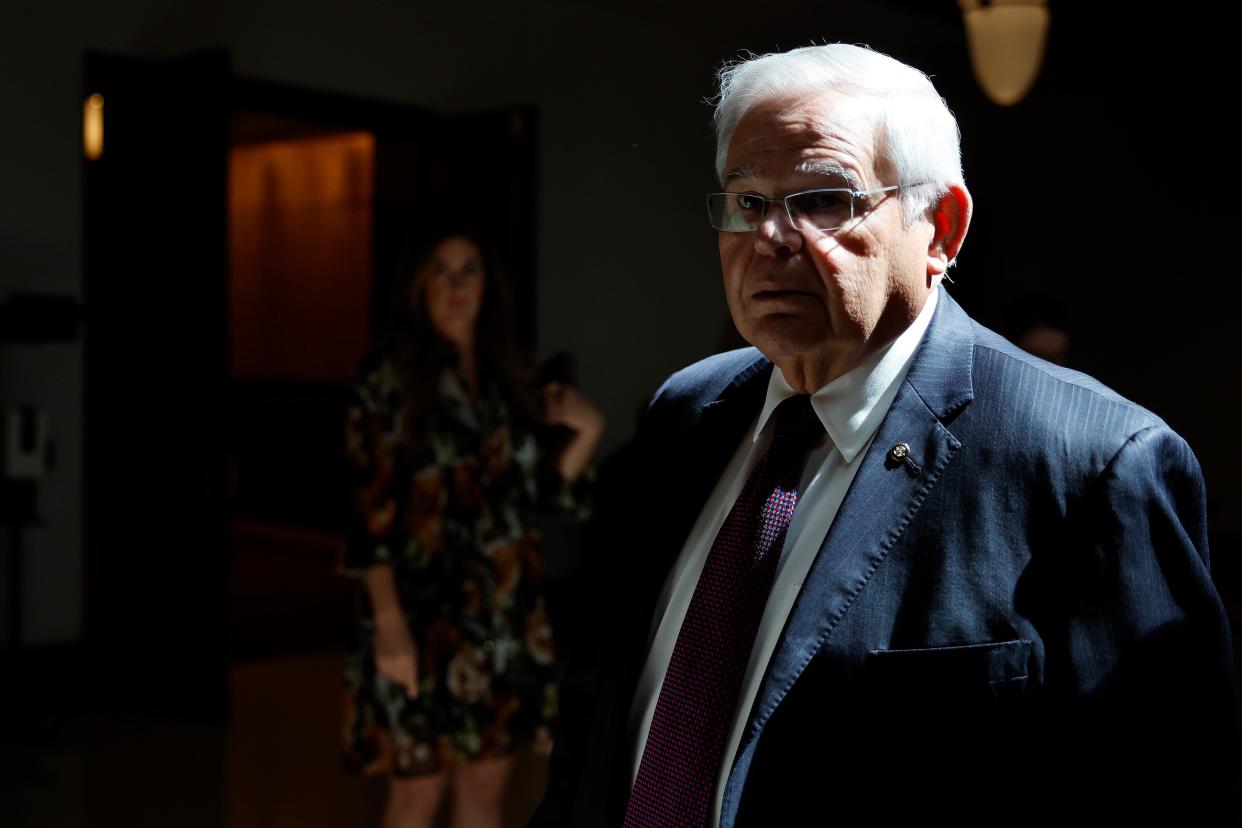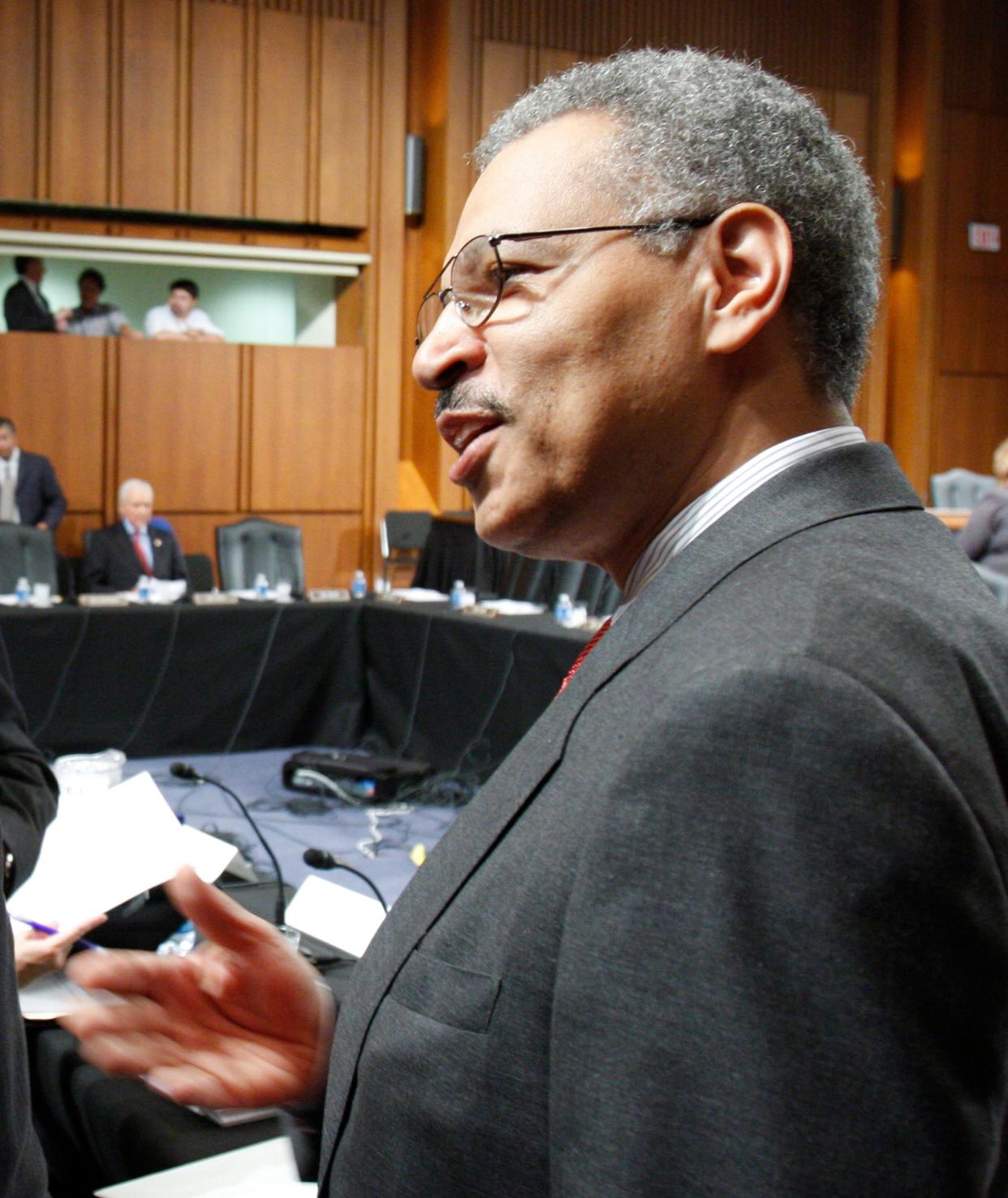Broken promises: Federal contractors made diversity pledges. They didn't keep them.
Each year thousands of companies land lucrative federal contracts, producing COVID-19 vaccines, manufacturing missile defense systems or serving hot meals.
But taking a slice of the hundreds of billions the U.S. government spends each year on goods and services comes with strings.
In 1965, President Lyndon Johnson signed an executive order holding federal contractors to a higher standard than other employers in ensuring that women and people of color have equal opportunities in hiring, training and promotions.
Nearly six decades later, an analysis by USA TODAY of new data on federal contractors obtained by Reveal from The Center for Investigative Reporting shows those firms are not living up to that commitment. Records were available for 19,000 companies, including 10,000 with data as recent as 2020.
Employees of color cut out of top jobs
Deep racial divides cut through the workforces of federal contractors, which employ 1 in 5 American workers.
Though the employee ranks in these companies have diversified, the top jobs that command the best pay and benefits have not, mirroring the private sector at large.
White men dominate the executive ranks, holding 59% of those positions in 2020. They are the only demographic group that holds a higher proportion of top positions than of all other jobs, where 34% are white men.

People of color are largely missing from the top assignments. A small fraction of executives are Black or Hispanic, and an even smaller number are women of color. Instead they are concentrated at the lower levels of organizations in roles such as administrative assistants, technicians and laborers.
Even at companies where women and people of color hold management jobs at rates near their workforce participation, it does not translate into advancement into the C-Suite.
While white male executives could almost fill Houston’s football stadium twice, Black female executives would fit into a few sideline sections. They hold just roughly 1.7% of the top jobs at these companies.
The second-widest representation gap is among Latinas or Hispanic women, with about 1.5% of executive positions. Asian women hold around 2% of executive roles.
The fallout can be measured in stagnating income levels and widening wealth gaps as women of color face powerful headwinds when they try to rise above middle management.
The USA TODAY and Reveal findings suggest federal contractors are not meeting their contractual obligation to combat historical patterns of discrimination, and the federal government is doing too little to ensure they abide by the letter and spirit of the law, said J. Edward Kellough, professor of public administration and policy at the University of Georgia.
“Federal contractors are doing work for our government, and it’s being funded by our government,” he said. “The government is supported by all the people, so their workforce ought to reflect all the people.”
Sen. Robert Menendez, D-N.J., whose office has conducted a corporate diversity survey of America’s largest companies since 2010, says the findings reveal “an abysmal record among federal contractors who have largely failed to improve and promote diversity at the highest levels of their organizations.”
“This clearly demonstrates why Congress must do more to ensure all federal contractors that receive federal dollars can show data-backed progress in training, hiring, and promoting diverse candidates at all levels, especially executive leadership positions,” he said in an emailed statement.

Corporations tout their commitment to a diverse workforce in glossy reports filled with smiling photographs of employees of all races. But for years they resisted disclosing their actual numbers of people of color and women they employ.
That began to change after the murder of George Floyd in Minneapolis in 2020. Under pressure from investors and employees, more companies opened themselves up to public scrutiny by voluntarily sharing the forms they are required to submit each year with the federal Equal Employment Opportunity Commission.
'It's got to change': Former PG&E CEO Geisha Williams on the lack of Latina executives in top companies
Lawsuit reveals years of demographic data on employees and executives
Federal contractors are not only charged with opening up opportunities, but they also must submit proof through the EEO-1 forms that include the race, ethnicity and gender of employees broken down by job category.
Until now, the government shielded that information from public view. It took a yearslong legal battle by Reveal to pry the information loose.
Last week, the Labor Department released data on more than 19,000 federal contractors employing as many as 19 million people. Thousands more have objected, and their information remains in limbo pending further litigation.
About 4,000 companies had contracts in both 2016 and 2020. Two-thirds did not show improved diversity at the top in those five years; overall, the percentage of white executives dropped only about 2 percentage points.
Openly gay in the boardroom: Why so few LGBTQ executives lead America's largest companies
There was some progress: The ranks of women of color who are executives at those companies grew 30%, from about 4,800 to about 6,200.
At that rate, however, it will take more than 50 years for women of color to occupy as many spots in the C-Suite as they do behind cash registers and in cubicles.
Nearly all white leadership in companies with big federal contracts
Take ABM Industries, a facility services company employing more than 100,000 people, which scored $15 million in federal contracts in 2020. Of 460 executives, 78% were white, while white people held just over a fifth – 21% – of other jobs.
Ninety-one percent of executives at debt collector GC Services were white in 2020, but white people accounted for about a third of their 7,000 workers. The company was awarded more than $478 million in federal contracts.
Asian women shut out of leadership: Our data shows why
Like any other employer, federal contractors can’t discriminate based on race or gender. But as recipients of federal money, they have to go further than that under the standard set by Johnson: They are required to actively open doors for women, people of color, people with disabilities and veterans.
They must develop affirmative action plans to show how they will accomplish that. Federal contractors also can be audited by the Labor Department. Sometimes the department uses the type of demographic data released last week to support its investigations.
'I wanted to move up in the company'
The NAACP and Communication Workers of America recently used EEO-1 data to highlight racial disparities at Maximus, a call center provider whose annual federal contracts exploded from $371 million in 2016 to $1.9 billion last year, in part because of the COVID-19 pandemic. The company had posted its 2021 EEO-1 report in response to shareholder pressure, according to the groups’ report.
The groups found that Black women and Latinas make up almost half of the lowest-ranking workers at the company but only 5% of executives.
Daija Arrington, a 27-year-old mother of two, works for Maximus from her home in Hattiesburg, Mississippi, answering emails people write to the Centers for Disease Control and Prevention asking about COVID-19 and vaccines. After nine years in customer service, three of them at Maximus, she’s trying to climb the ladder to management.
“I have the experience and I have the heart and I have the knowledge,” she said. “And loving the place I was working, I wanted to move up in the company.”
When she applied for Maximus supervisor positions several times, Arrington said, she either heard nothing or was rejected without an explanation. She’s working on an online degree in business administration, hoping that will improve her chances.
Statistically, she faces an uphill battle: Most of her own supervisors have been white.
Arrington, who is Black, said she can’t help but think, “Nothing’s changed.” Calling out the company on disparities between leadership and other employees is important, she said, “It’s important to me because I deserve a seat at the table.”
Maximus’ vice president of public relations, Eileen Cassidy Rivera, said the company is routinely audited by the government for its hiring practices and has passed every time.
“Maximus is committed to diversity, equity, and inclusion, and we continue to make significant progress with our long-term commitment to build a strong and diverse workforce,” Rivera said in an emailed statement. “Maximus has an established career path for all contact center employees that we regularly promote with our program and teams.”
Maximus does not appear in the data released by the federal government, and Rivera did not directly respond to questions about why the company objected to disclosure.
Racial inequality at the top hurts careers
Diversity researchers say racial inequality can derail careers.
In 2017, Althea Woodson, a 27-year-veteran Black engineer, sued Boeing because she said younger white male co-workers were given more opportunities to advance within the organization.
The case settled out of court in 2019 for undisclosed terms.
The company receives more than $20 billion a year in federal contracts. In 2020, 79% of its executives were white, a dramatic improvement from 89% five years earlier.
Representatives from Boeing declined to comment on their employment records.
'A disservice to the organization'
Homogeneity at the leadership level also puts corporations at a disadvantage. As the nation grows more diverse, studies show, greater diversity on leadership teams improves financial performance and increases innovation.

Ron Williams, the former Aetna CEO whose first job was washing cars on Chicago's South Side in the dead of winter, says corporations must cast a wider net and apply a broader lens to the executive skill set.
“People have lots of capabilities to learn and to do great things if given the opportunity,” said Williams, among a small number of Black leaders who have run a Fortune 500 company. “To judge people by where they came from and to judge people by what they are currently doing is a disservice to them and a disservice to the organization.”
Inequities can persist even after promotions. In 2017, a young female consultant at Booz Allen Hamilton sued her former employer, accusing it of gender discrimination.
After moving up to a management role, Raena Dhuy says she discovered all of her female subordinates were paid substantially less than their male counterparts. And she herself was vastly underpaid, she said.
Booz Allen denied the accusation and settled the case out of court.
Booz Allen and its related consulting companies were paid more than $5 billion by federal agencies in 2020. That year, more than a quarter of executives were women, all of them white.
“Our business requires a diverse workforce that respects and champions inclusive thought, experiences, and backgrounds,” spokesperson Jessica Klenk wrote, noting the company has set specific goals for increasing diversity among senior leaders. “We remain committed to building and empowering diverse talent within our workforce and in our communities.”
Dhuy said she cannot discuss details of her case because she signed a nondisclosure agreement as part of the settlement. But she said Americans should expect top federal contractors like the firm to pay their employees equitably.
“People give up their lives because they work so many hours and dedicate so much of their time to these companies,” Dhuy said. “I can’t imagine why they wouldn’t be treated equally both in pay and in general respect.”
Contributing: Savannah Kuchar
This article was produced in collaboration with Reveal from The Center for Investigative Reporting, a nonprofit investigative newsroom.
This article originally appeared on USA TODAY: No diversity at the top: How federal contractors are failing America
